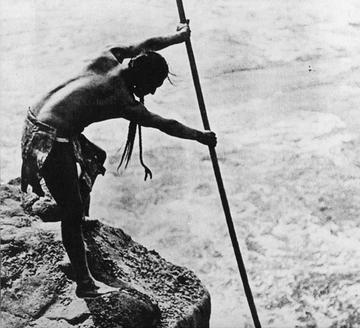Social Studies K to 3
Kindergarten
Identity and Families
People, places, and events in the local community, and in local First Peoples communities:
Search for:
- Local community name, eg.
- Duncan
- Local First Peoples community name, eg.
- Cowichan First Nation
- Salishan First Nations
- First Nations of BC (for a comprehensive discussion)
- An event, eg.
- Trail Smelter opening
- A person, eg.
- Heinze, owner of Cominco mines at that time
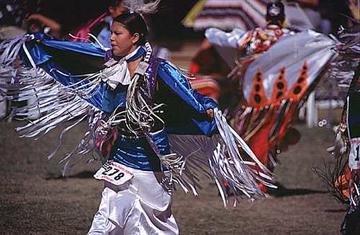
Annual powwow in Kamloops, 1999. Aboriginal people from all over N America attend the gathering. Keith Thirkell photo
- Chapter 1 of Far West, on Original People
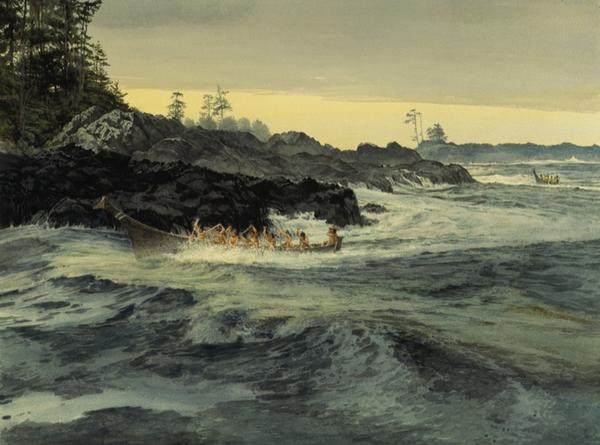
This dramatic painting shows one of the ocean-going canoes made by the Nuu-chah-nulth people of Nootka Sound on Vancouver Island. Gordon Miller painting
Grade 1
Local Communities
Explain the significance of personal or local events, objects, people, or places (significance):
|
Sample activities:
|
Diverse cultures, backgrounds, and perspectives within the local and other communities:
Sample topic:
- Different languages, customs, art, music, traditions, holidays, food, clothing, and dress
- Search for a People,
- eg. Japanese
- First Nations Languages
- NW Coast Aboriginal Art
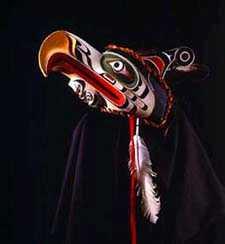
Thunderbird headdress by Richard Hunt. Bob Matheson photo
Relationships between a community and its environment:
- Search for:
- Your local community name, eg.
- Duncan
- A resource, eg.
- Coal or Chapter 5 of Far West, Coal Was King
Sample topics:
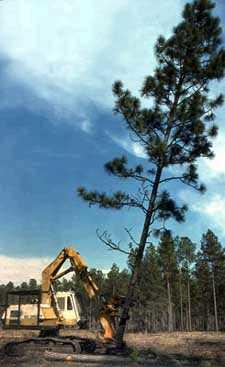
Feller buncher at work. Courtesy Western Forest Products
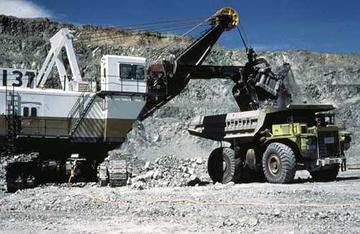
Open-pit mining at the Island Copper Mine near Port Hardy, c 1980. Courtesy Island Copper
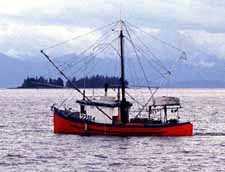
Troller at work off Dundas Island on the North Coast, 1994. Peter A. Robson photo
- Parks and other Natural Areas
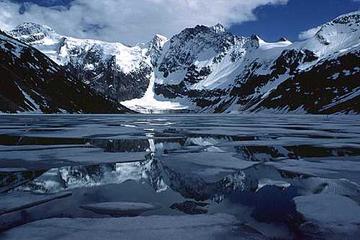
Lake of the Hanging Glacier Provincial Park. Walter Lanz/Image Makers
Key events and developments in the local community, and in local First Peoples communities:
Sample topics:
- Community milestones (e.g., the founding of the community, the opening and closing of local businesses, the construction of new buildings)
- Celebrations and holidays
- Cultural events
- Growth or decline of a community
Key questions:
- What is the most significant event in your local community’s history?
- How is your community different now from what it was like before settlers arrived?
- Search for:
- Your local community name, eg.
- Fort St James
- The local First Peoples community name, eg.
- Dakelh First Nation
- Salishan First Nations
- A First Nations word, eg.
- Potlatch
- The Origonal People, Potlach
- Totem Poles
- The Original People, Totem Poles
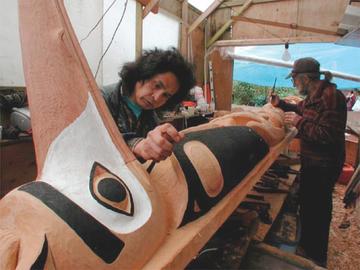
Totem poles are still being made by Aboriginal carvers. They are a familiar sight in British Columbia. Jacqueline Windh photo
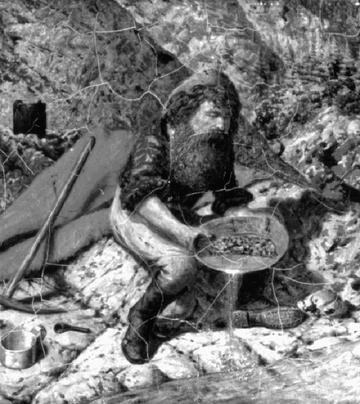
Early prospectors panned gold from gravel bars beside the river. The artist William Hind came west from Toronto in 1862 to paint the exciting scenes of the gold rush. BC Archives PDP 01207
Natural and human-made features of the local environment:
- Search for:
- Name of a natural area, eg.
- Purcell Mountains
- Name of a human-made area, eg.
- Port Mann Bridge
Sample topics:
- Natural features: mountains, forests, waterways, local plants and animals
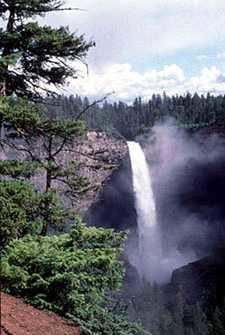
Helmcken Falls, Wells Gray Provincial Park. Walter Lanz/Image Makers
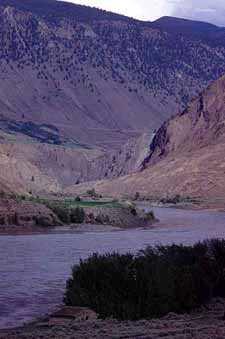
The Fraser River near Clinton. Rick Blacklaws photo
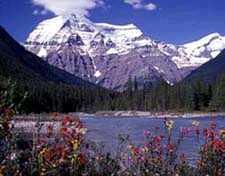
Mt Robson, the highest peak in the Canadian Rockies. Keith Thirkell photo
- Human-made features: buildings, bridges, dams, dykes
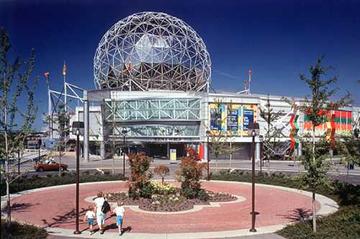
Science World BC, Vancouver.
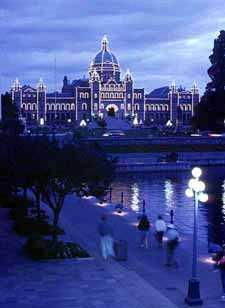
The BC legislative buildings at night. Roy Luckow photo
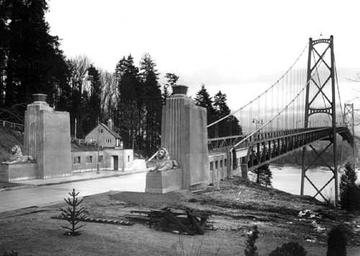
South end of Lions Gate Bridge, 1938. VPL 15015-14
Grade 2
Regional and Global Communities
Explain why people, events, or places are significant to various individuals and groups (significance):
|
Sample activity
|
Diverse characteristics of communities and cultures in Canada and around the world, including at least one Canadian First Peoples community and culture:
Sample topics:
- Key cultural aspects (e.g., language, traditions, arts, food)
- Cultural diversity within your community
- Search for:
- The local First Peoples community name, eg.
- Cowichan First Nation
- Salishan First Nations
- Name of cultural community, eg.
- Chinese
- Name of a cultural practice, eg.
- Potlatch
- Totem Poles
- First Nations of BC
- Chapter 1 of Far West, on Original People
- Rock Art
- Northwest Coast Aboriginal Art
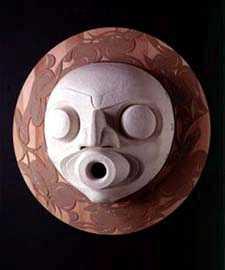
Speaking Great Silence by Susan Point. Kenji Nagai/Spirit Wrestler Gallery
How people’s needs and wants are met in communities:
Sample topics:
- How people acquire goods and services (e.g., by buying or renting, or through public funding)
- Needs and wants in different communities: different needs and wants depending on the climate; different goods and services depending on the size of the community (i.e., small versus large)
Key questions:
- How do the local environment and culture affect the goods and services available in your community?
- Search for:
- A community name, eg.
- Duncan
- A resource, eg.Coal or Chapter 5 of Far West, Coal Was King
- Name of a natural area, eg.
- Bugaboos
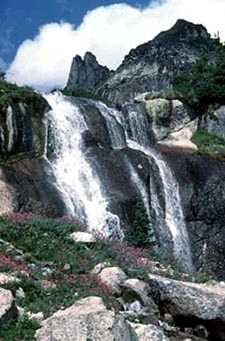
Bugaboo Provincial Park in the Purcell Mountains, south of Golden. Walter Lanz/Image Makers
Grade 3
Global Indigenous Peoples
Explain why people, events, or places are significant to various individuals and groups (significance):
Key questions:
- Why are stories important to indigenous people?
- Why do Elders play an important part in the lives of First Peoples?
- What values were significant for local First Peoples?
- Search for:
- Local First Peoples’ community name, eg.
- Cowichan First Nation
- Salishan First Nations
- Oral History, Storytellers
- First Nations of BC
- Chapter 1 of Far West, on Original People
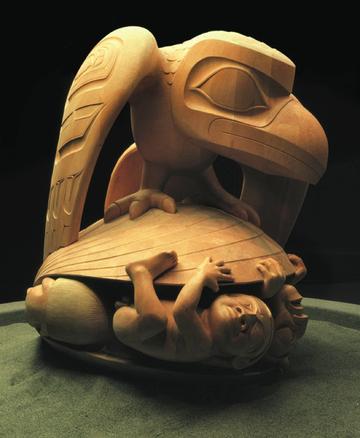
Bill Reid was an artist who belonged to the Haida people who live on the Queen Charlotte Islands. He made many beautiful sculptures. This one is called “The Raven and the First Men.” It shows the first people emerging from a clamshell, as told in one of the Haida creation stories. The sculpture is on display at the Museum of Anthropology at the University of British Columbia. Collection of the UBC Museum of Anthropology, Vancouver, Canada. Bill McLennan photo
Sequence objects, images, or events, and explain why some aspects change and others stay the same (continuity and change):
|
Sample activities:
|
Key questions:
- How has the way of life changed for indigenous people?
- How are indigenous cultures viewed today?
- How have First Peoples government and leadership changed over time?
- Chapter 2 of Far West, Aboriginal People and the Fur Trade
- Chapter 8 of Far West, Aboriginal People in Boom Times
- First Nations of BC
- Chapter 1 of Far West, on Original People
- Aboriginal Demography
- Residential schools
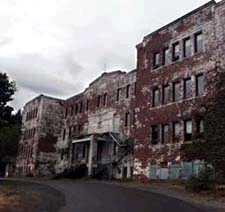
Former Alert Bay residential school, 1995. Les Bazso/Vancouver Province
Recognize causes and consequences of events, decisions, or developments (cause and consequence):
Key questions:
- How might present-day Canada be different if First Peoples had not been moved to reserves?
- How has the way of life changed for indigenous people?
- Reservations
- First Nations of BC
- Chapter 1 of Far West, on Original People
- Douglas Treaties
- Aboriginal rights
- BC Treaty Commission
- Nisga’a treaty
- Aboriginal Demography
- Residential schools
- Chapter 5 of Far West, Disappearing Fish
- Chapter 8 of Far West, Aboriginal people in Boom Times

Aboriginal students at a residential school at Alberni on Vancouver Island in the 1930s. BC Archives B-01060
Explain why people’s beliefs, values, worldviews, experiences, and roles give them different perspectives on people, places, issues, or events (perspective):
|
Sample activities:
|
Key question:
- How do the values of indigenous people differ from the values of people from other cultures?
- Search for the local First Peoples community name, eg.
- Cowichan First Nation
- Salishan First Nations
- Chapter 1 of Far West, Storytellers
- First Nations of BC
- Chapter 1 of Far West, on Original People
- For BC historical treaties
- Aboriginal rights
- BC Treaty Commission
- Nisga’a treaty
- Aboriginal languages
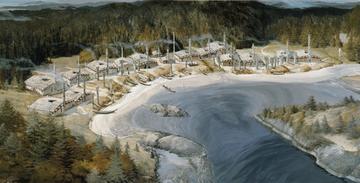
A modern artist, Gordon Miller, used old photographs to make this painting of a Haida village as it looked 150 years ago. The Haida are a coastal people. The village, called Ninstints, is gone now, though some of the totem poles remain. Gordon Miller painting
Make value judgments about events, decisions, or actions, and suggest lessons that can be learned (ethical judgment):
Key questions:
- Should indigenous cultures and languages be maintained?
- Should anything be done about the loss of indigenous lands?
Cultural characteristics and ways of life of local First Peoples and global indigenous peoples:
Sample topics:
- Potential First Peoples and global indigenous people for study could include:
- Local BC First Peoples
- Worldview, protocols, celebrations, ceremonies (Potlatch and Chapter 1 of Far West, Potlatch), dance, music, spiritual beliefs, art (NW Coast Aboriginal Art), values, kinship, traditional teachings
- Search for:
- the local First Peoples community name, eg.
- Salishan First Nations
- First Nations of BC
- Chapter 1 of Far West, on Original People
- Chapter 1 of Far West, Storytellers
- Rock Art
- NW Coast Aboriginal Art
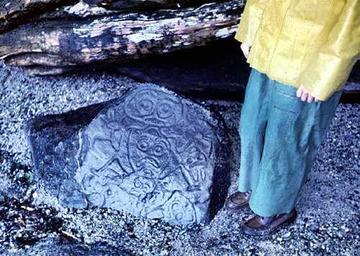
Petroglyph on a beach boulder at Mackenzie's Rock. Roy Carlson photo
Interconnections of cultural and technological innovations of global and local indigenous peoples:
Sample topics:
- Transportation
- Clothing
- Pottery
- Shelters and buildings
- Navigation
- Weapons
- Tools
- Hunting (Chapter 1 of Far West, digging up the past) and fishing techniques
- Building techniques
- Food cultivation and preparation
- Ceremonies eg. Potlatch
- Art, Northwest Coast Aboriginal Art, Totem Poles, Rock Art
- Music
- Basketry and weaving
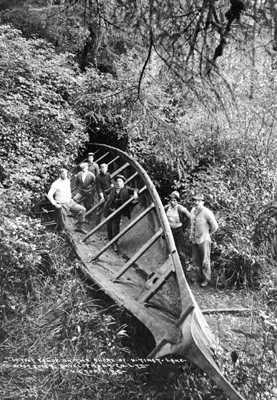
18-m canoe on the shore of Nitinat Lk, c 1914. Courtesy Angela Newitt
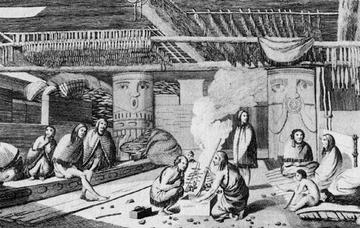
Governance and social organization in local and global indigenous societies:
Sample topics:
- Consensus
- Confederacies
- Elders
- Reservations
- Band councils
- Traditional leadership
- Social Complexity
- First Nations of BC
- Chapter 1 of Far West, on Original People
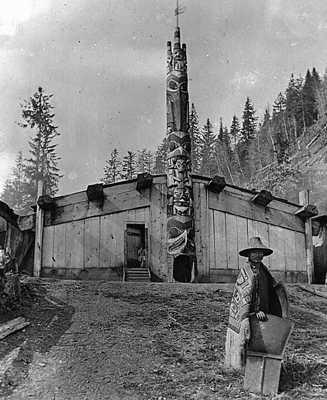
Cedar plank house at Haina, a Haida village, 1888. Richard Maynard/RBCM PN701
Oral history, traditional stories, and artifacts as evidence about past First Peoples cultures:
Sample topics:
- Tools
- Earth mounds
- Petroglyphs
- Oral stories
- Sacred or significant places and landforms
- Weapons
Relationship between humans and their environment:
Sample topics:
- Protocols around the world that acknowledge and respect the land
- Reshaping of the land for resource exploration and development.
- Search for names of BC dams, eg.
- Campbell Lake
- Hydroelectricity
- Logging
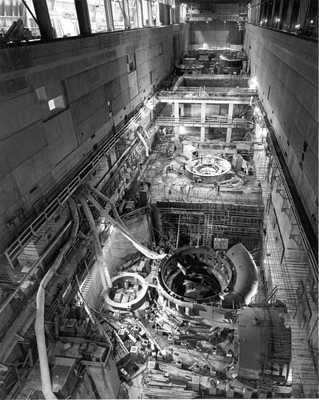
Inside the powerhouse at BC Hydro's Revelstoke Dam project on the Columbia R, 1983. The generating units are under construction. Vancouver Sun
- Domestication of animals
- Organization and techniques of hunting and fishing
- Aboriginal Fishing
- Commercial Fishing
- Chapter 5 of Far West, Disappearing Fish

